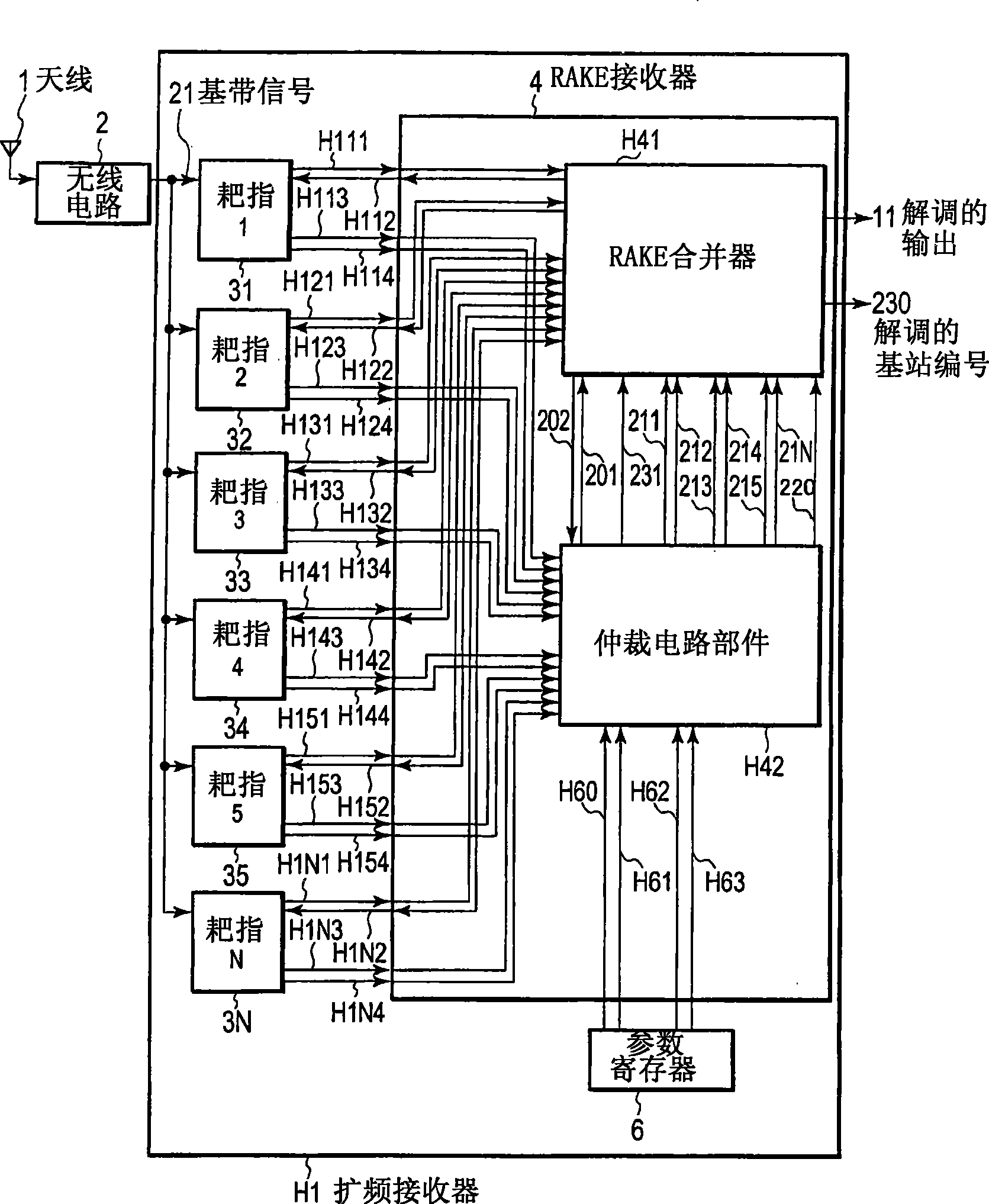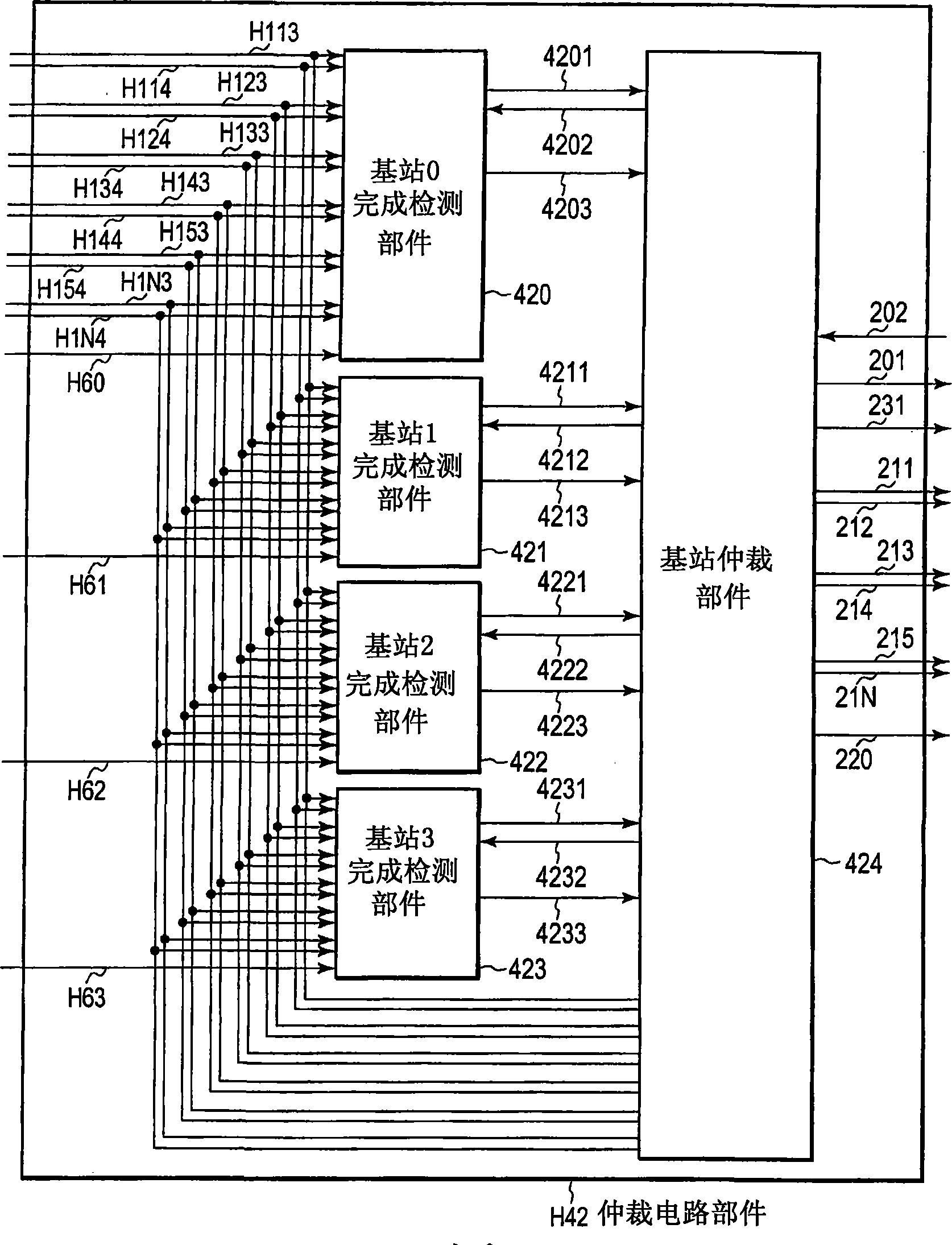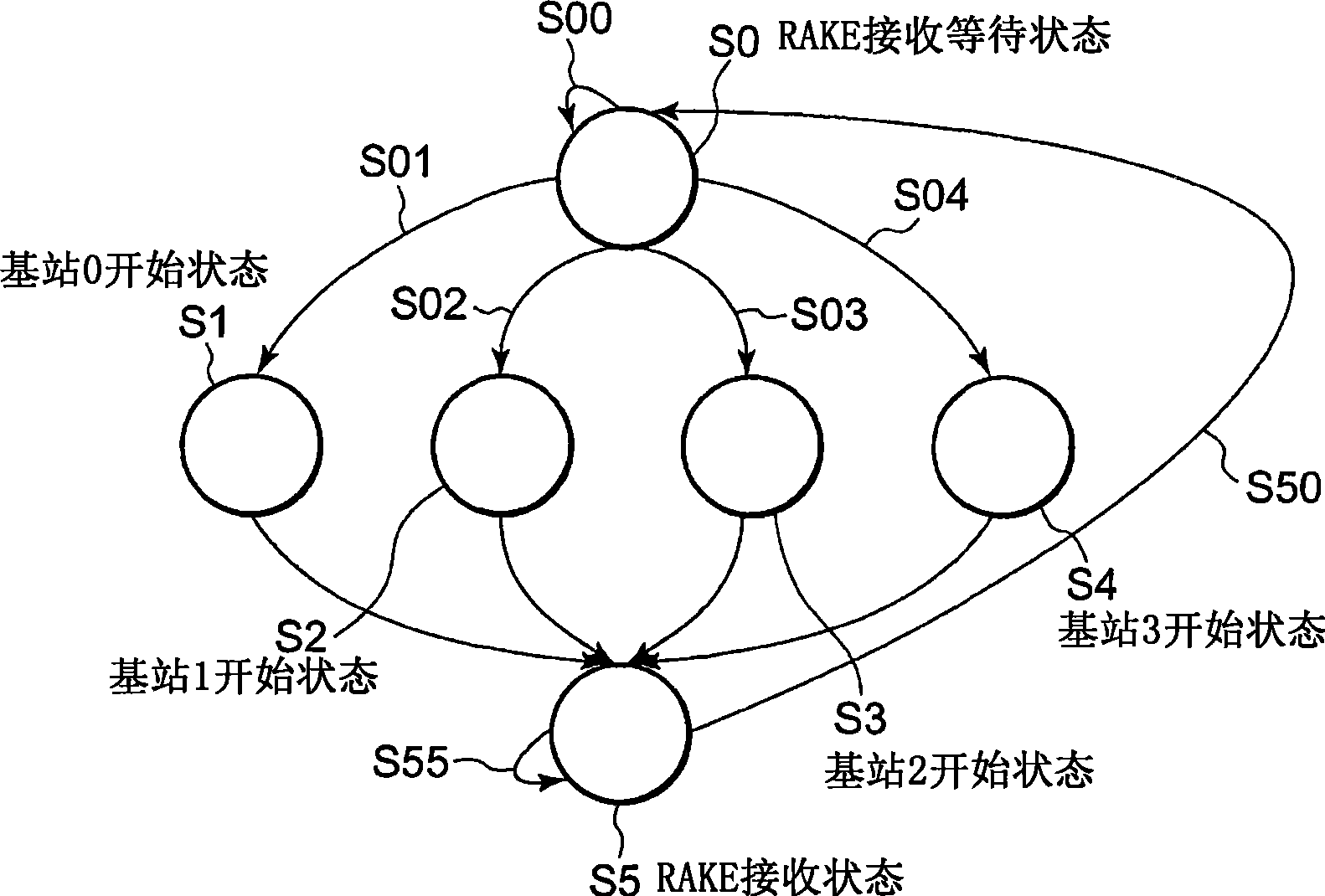Spread-spectrum receiver
A technology of receivers and registers, applied in the field of spread spectrum receivers, which can solve the problems of unrecognized reception of reverse spread spectrum data, merging, etc.
- Summary
- Abstract
- Description
- Claims
- Application Information
AI Technical Summary
Problems solved by technology
Method used
Image
Examples
Embodiment Construction
[0029] Hereinafter, embodiments of the present invention will be described with reference to the accompanying drawings.
[0030] figure 1 is a structural diagram of the spread spectrum receiver of the present invention. Embodiment 1 is constructed by an antenna 1, a wireless circuit 2, and a spread spectrum receiver H1, and the spread spectrum receiver H1 includes rake fingers 31, rake fingers 32, rake fingers 33, rake fingers 34, rake fingers 35, rake fingers 3N, RAKE fingers Receiver 4 , demodulated output 11 , demodulated base station number 230 and parameter register 6 .
[0031] The wireless circuit 2 is connected to the fingers 31 , 32 , 33 , 34 , 35 and 3N via the baseband signal 21 . The fingers 31 to 3N, each of which is preset with a base station number, are connected to the RAKE combiner H41 via the following data and signals: symbol data H111 of the finger 31, from the RAKE combiner H41 to The read signal H112 of the rake finger 31, the symbol data H121 of the ...
PUM
 Login to View More
Login to View More Abstract
Description
Claims
Application Information
 Login to View More
Login to View More - R&D
- Intellectual Property
- Life Sciences
- Materials
- Tech Scout
- Unparalleled Data Quality
- Higher Quality Content
- 60% Fewer Hallucinations
Browse by: Latest US Patents, China's latest patents, Technical Efficacy Thesaurus, Application Domain, Technology Topic, Popular Technical Reports.
© 2025 PatSnap. All rights reserved.Legal|Privacy policy|Modern Slavery Act Transparency Statement|Sitemap|About US| Contact US: help@patsnap.com



